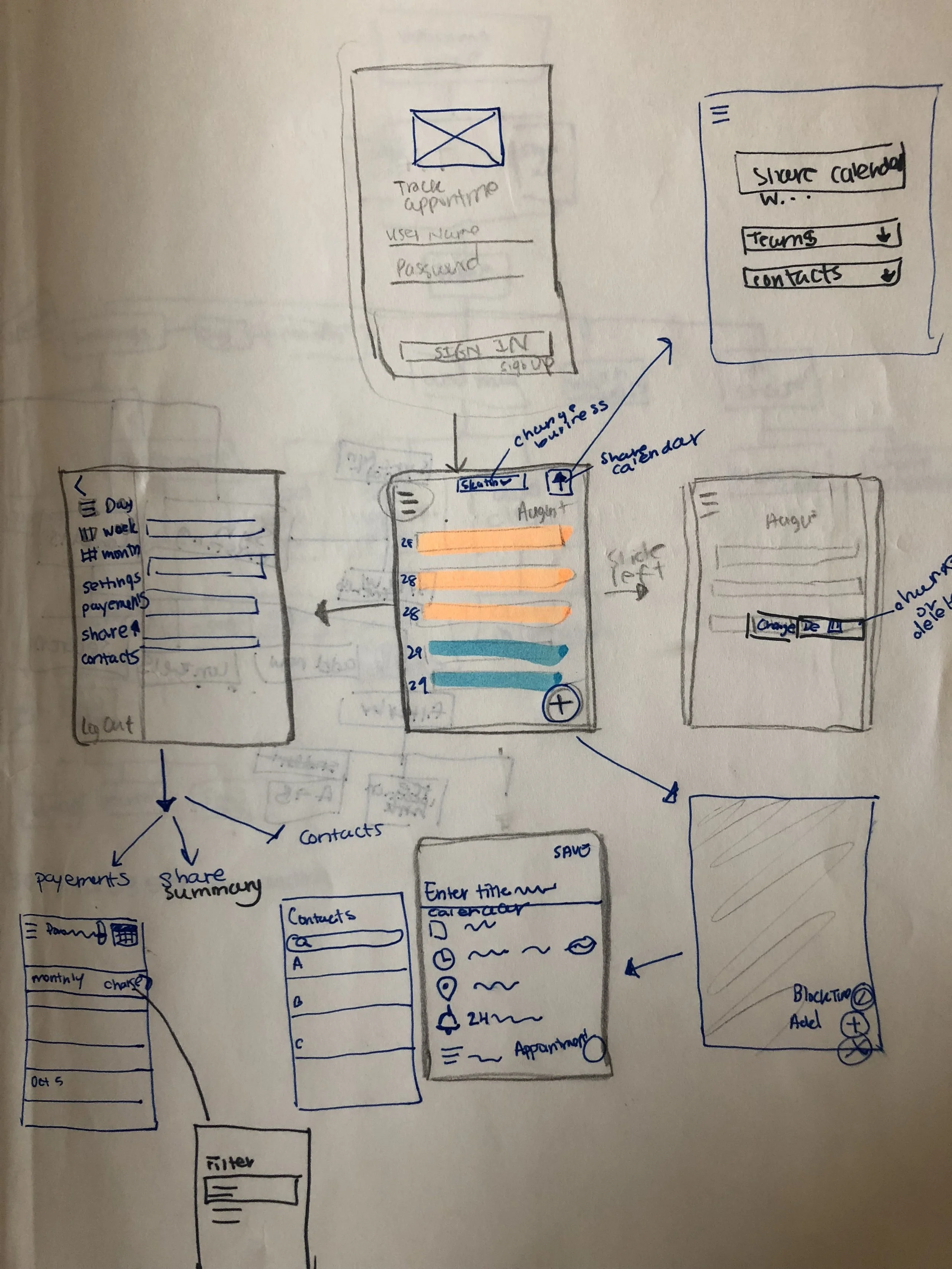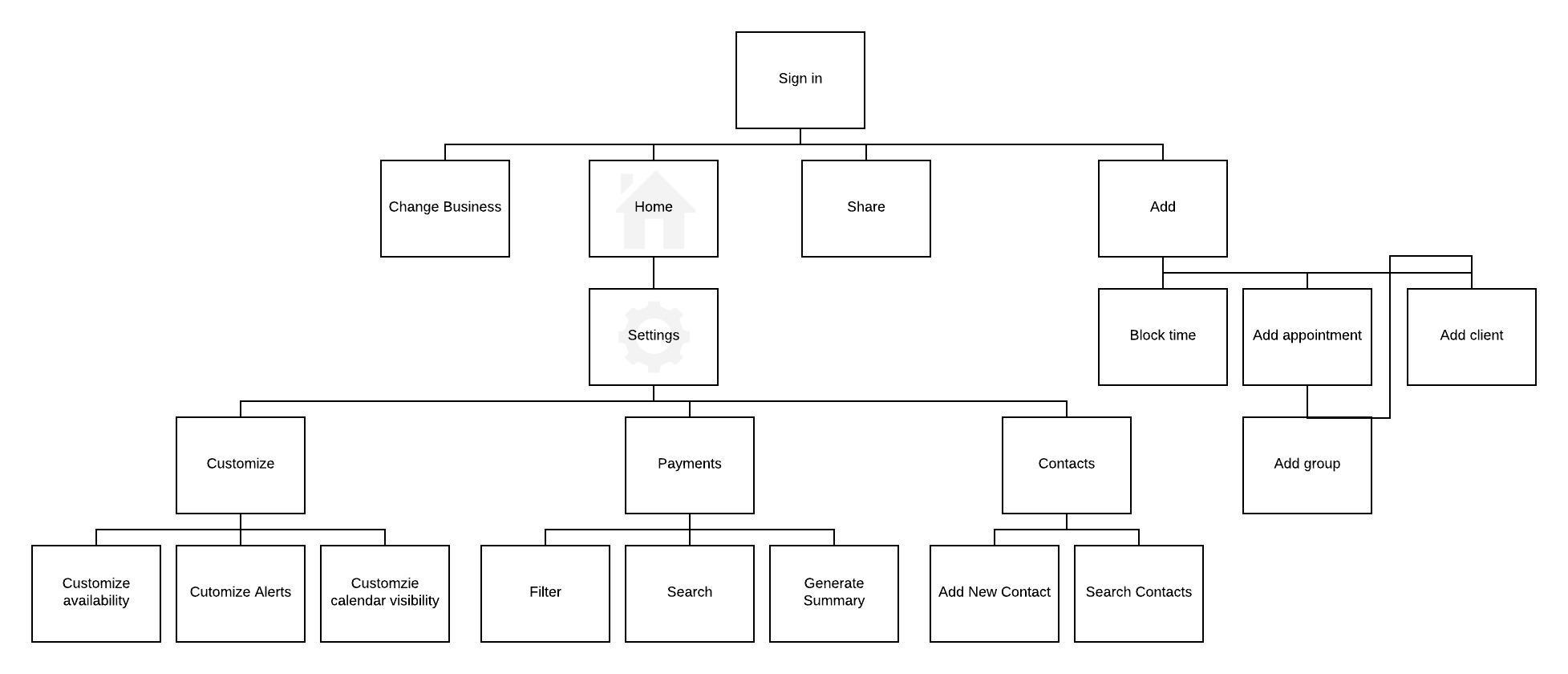Overview
CLIENT
A startup with an idea to build a new mobile app that seamlessly facilitates the scheduling and management of figure skating students.
CHALLENGE
To be successful in their business, figure skating coaches handle managerial tasks such as scheduling lessons and keeping track of payments. Many coaches spend up to several days a month creating a coaching schedule with their clients. Many coaches also don’t have a good system to keep track of the payments they receive from clients.
OUTCOME:
A clickable prototype
TOOLS:
Mural, Sketch, Overflow, Pen and Paper
My Role:
User Researcher, Product Designer
Goal:
Design a native app that helps coaches schedule lessons and keep track of payments.
User Research
To kick things off, I interviewed the company co-founders. I used the information from the interviews to define the project objectives. In addition, I performed market research to learn about similar existing products. Through my initial search, I learned that there are many other scheduling apps and one that stood out to me was an app customized for figure skating coaches. This app was Coach Concierge. Being a figure skating coach myself, it surprised me that I had never heard of this app before. I started with a heuristic evaluation to learn more about how the app worked.
From my conversation with the stakeholders and initial market research, I learned that my priority is to gain a better understanding of how figure skating coaches schedule their lessons and keep track of payments.
Objective: to understand how figure skating coaches scheduled lessons and create ideas for future app prototype designs.
For this project I wanted to try a new technique for creating interview questions called Question Cloud. Instead of a traditional script the format gives you an opportunity to easily go from one topic to another in the interview.
Question Cloud that I used to drive my interviews.
What I learned: This type of format works well for generative interviews. It gives the moderator more flexibility to move around from one topic to another.








